
단일 샤프트 슈레더 블레이드 파쇄 작업에서 중요합니다. 칼날 디자인은 기계의 성능을 향상시키고 수명을 연장하는 데 도움이 됩니다. 이 칼날은 힘든 작업에 사용됩니다. 금속이나 플라스틱처럼 큰 물건을 파쇄할 때, 갈고리 모양의 칼날 잡아서 뜯어내세요. 이렇게 하면 파쇄 작업이 잘 됩니다. 칼날 재질은 칼날이 날카롭고 튼튼하게 유지되도록 도와줍니다. 압력에도 쉽게 부러지지 않습니다. 많은 회사가 필요에 맞는 맞춤형 칼날을 원하며, OEM 또는 ODM 옵션을 선택합니다. 우수한 품질 관리를 통해 안정적인 결과를 얻을 수 있으며, 재활용 및 폐기물 관리 목표 달성에도 도움이 됩니다.
주요 요점
- 단일 샤프트 파쇄기 날은 폐기물 처리에 매우 중요합니다. 플라스틱, 금속, 고무 등을 작은 조각으로 분쇄하는 데 도움이 됩니다.
- 올바른 칼날 디자인을 선택하는 것은 매우 중요합니다. 직선형, 톱니형, R형 날은 다양한 소재에 가장 적합합니다.
- 특수 파쇄 요구 사항에 맞춰 맞춤형 칼날을 제작할 수 있습니다. OEM 옵션을 통해 원하는 크기, 모양, 재질을 선택할 수 있습니다.
- 칼날을 잘 관리하면 더 오래 사용할 수 있습니다. 매주 칼날에 손상이 있는지 확인하고, 사용 후에는 세척하세요. 한 달에 한 번씩 날을 갈아주세요.
- 선택하는 재료에 따라 칼날의 성능이 달라집니다. 공구강은 오래갑니다. 초경 팁 칼날은 힘든 작업에 가장 적합합니다.
- 칼날을 제대로 끼우면 안전이 보장되고 더 잘 작동합니다. 항상 제조사의 규정을 따르세요. 칼날을 끼운 후에는 안전 점검을 하세요.
- 작업자를 대상으로 안전한 파쇄 방법을 교육하면 사고 예방에 도움이 됩니다. 칼날을 점검하고 마모 흔적을 발견하는 방법을 교육하세요.
- 유지 관리 계획을 세우면 고장을 예방할 수 있습니다. 칼날을 자주 점검, 청소, 연마하세요. 이렇게 하면 분쇄기가 잘 작동합니다.
단일 샤프트 분쇄기 블레이드 개요
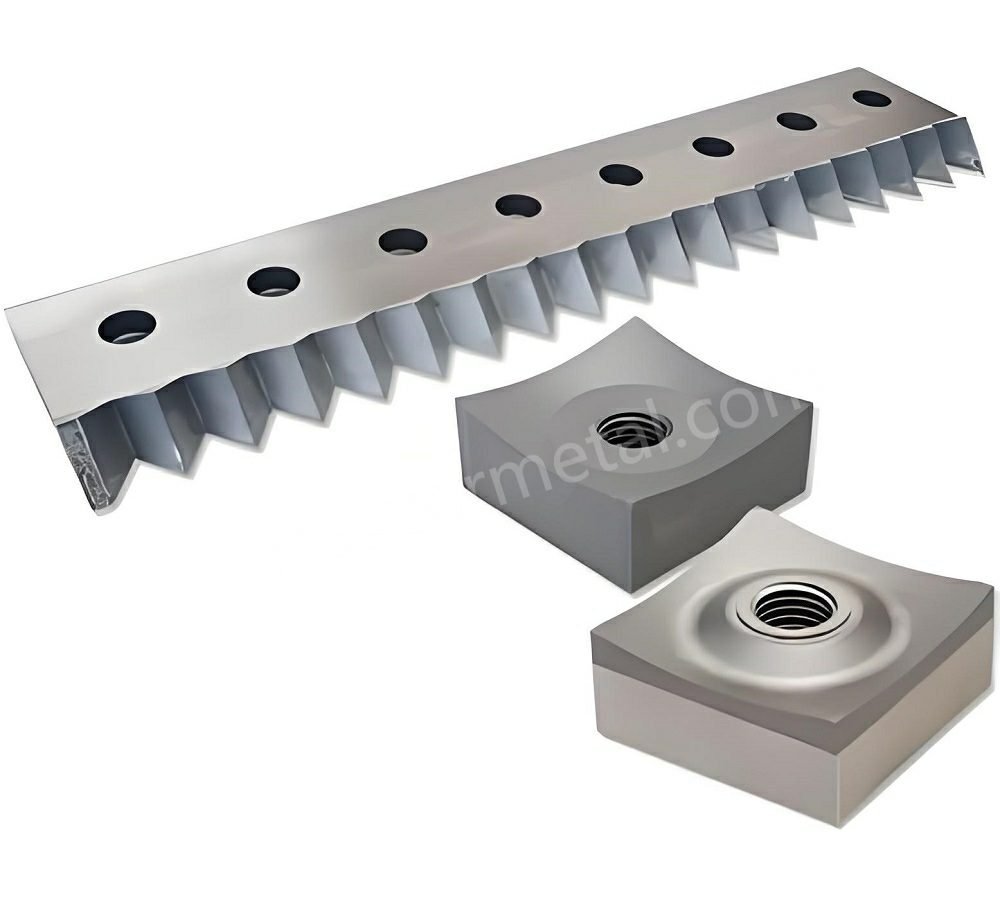
블레이드 기능
단일 샤프트 파쇄기 날은 다양한 종류의 폐기물을 분쇄하는 데 도움이 됩니다. 이 날은 물건을 자르고, 찢고, 더 작은 조각으로 자릅니다. 다음에서 찾을 수 있습니다. 플라스틱 재활용, 목재 가공, 금속 재활용또한 고무 및 타이어 재활용, 전자 폐기물 재활용, 섬유 및 섬유 재활용에도 사용됩니다.
- 플라스틱 재활용: 플라스틱 폐기물을 새로운 제품으로 전환합니다.
- 목재 가공: 목재 폐기물을 칩이나 멀치로 바꿉니다.
- Metal 재활용: 금속 조각을 잘라서 취급과 재활용을 용이하게 합니다.
- 고무 및 타이어 재활용: 타이어를 작은 조각으로 부수어 재사용합니다.
- 전자 폐기물 재활용: 전자 폐기물을 분해하여 재료를 회수합니다.
- 섬유 및 섬유 재활용: 새로운 섬유를 만드는 데 필요한 직물 폐기물을 줄입니다.
단일 샤프트 파쇄기 날은 폐기물을 더 쉽게 옮기고 보관할 수 있도록 도와줍니다. 작업에 맞는 날을 선택하면 재활용 작업을 더 빨리 완료할 수 있습니다.
디자인 원칙
칼날 디자인은 분쇄기의 작동 방식에 영향을 미칩니다. 모양, 두께, 날의 모양 모두 중요합니다. 곧은 칼날은 부드러운 재료를 깔끔하게 잘라줍니다. 톱니 모양의 칼날은 질기거나 끈끈한 재료를 잡아서 잘라냅니다. R자 모양의 칼날은 크거나 신축성 있는 폐기물을 안으로 끌어당깁니다. 칼날은 분쇄기와 사용하는 재료에 맞춰야 합니다. 그래야 더 나은 결과를 얻고 칼날 수명이 길어집니다.
난징 Metal Industrial은 특수 단조 및 열처리를 통해 칼날을 제작합니다. 견고한 소재와 정교한 가공을 통해 칼날이 날카로움을 유지하고, 힘든 작업에서도 오래 사용할 수 있도록 도와줍니다.
팁: 새 칼날을 선택하기 전에 항상 파쇄기 설명서를 확인하세요. 적합한 칼날은 파쇄기를 안전하게 보호하고 원활하게 작동하게 합니다.
OEM 적응
때로는 작업에 맞는 칼날이 필요할 수 있습니다. OEM 방식으로 원하는 크기, 모양, 재질을 선택할 수 있습니다. Nanjing Metal Industrial은 단일 샤프트 및 다중 샤프트 파쇄 칼날을 제공합니다. Nanjing Metal Industrial 팀에 문의하시면 기계와 작업에 맞는 칼날을 제작해 드립니다.
| 특징 | 혜택 |
|---|---|
| OEM 사양에 맞춰 제조 | 블레이드가 잘 맞고 최상의 성능을 발휘하도록 합니다. |
| 첨단소재 | 블레이드는 더 오래 지속되고 마모에 강합니다. |
| 혁신적인 디자인 | 파쇄가 더 빠르고 더 잘 작동합니다 |
| 50년의 전문성 | 분쇄기는 가동 중지 시간을 줄이고 더 오래 작동합니다. |
| 현대 합금 | 블레이드는 매우 강력하고 정말 잘 작동합니다. |
당신만을 위한 칼날을 원하신다면 다음을 확인하세요. 맞춤형 블레이드 더 많은 아이디어를 얻으려면. 맞춤형 칼날을 사용하면 특수 파쇄 문제를 해결하고 작업을 원활하게 진행할 수 있습니다.
파쇄기 블레이드 디자인 특징
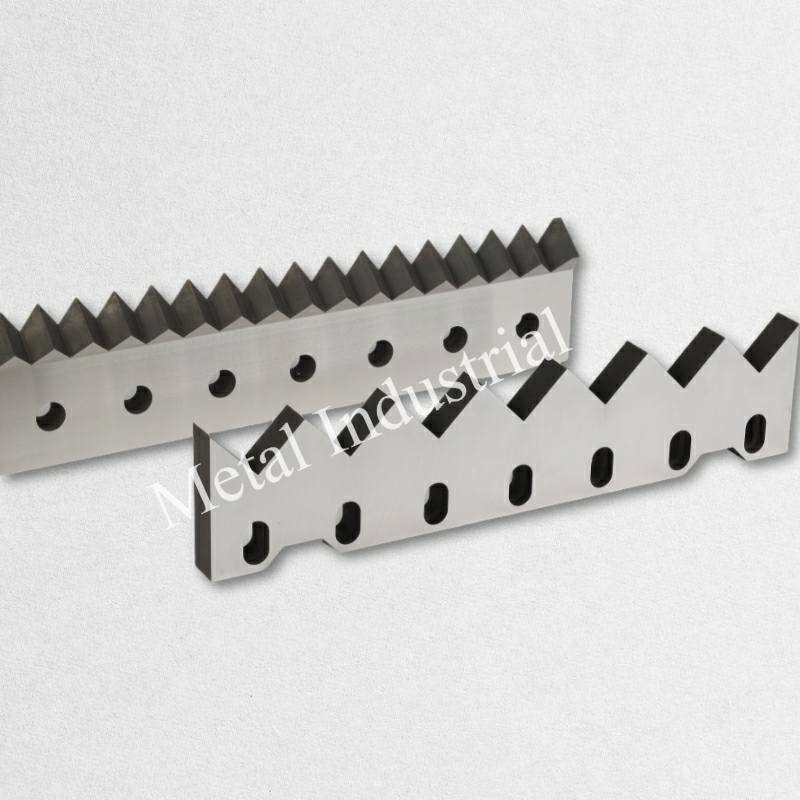
파쇄기 칼날 디자인을 살펴보면 날의 모양, 구조, 그리고 제작 방식이 매우 중요하다는 것을 알 수 있습니다. 이러한 요소들은 기계가 다양한 재료에 잘 작동하는 데 도움이 되며, 폐기물 처리 시 좋은 결과를 얻는 데에도 도움이 됩니다.
엣지 스타일
칼날의 모양에 따라 절단 방식이 달라집니다. 크게 직선형, 톱니형, R형의 세 가지 유형이 있습니다. 각 유형은 특정 작업에 가장 적합합니다.
똑바로
직선 날은 평평하고 매끄럽습니다. 이러한 종류의 날은 표면에 고르게 힘을 가합니다. 직선 날은 플라스틱, 직물, 종이처럼 부드러운 재질에 적합합니다. 날을 세우기 쉽고 깔끔하게 잘라낼 수 있으며, 간단한 작업에 사용하면 오래 사용할 수 있습니다.
톱니 모양의
톱니 모양의 날은 작은 톱니가 달린 톱처럼 보입니다. 이 스타일은 칼날이 잘 잡히고 잘 자르는 데 도움이 됩니다. 톱니 모양의 날은 고무, 나무, 일부 금속처럼 질기거나 끈적끈적한 물체에 적합합니다. 미끄러짐을 방지하고 딱딱한 폐기물을 파쇄하는 데 도움이 됩니다. 톱니 모양의 날은 직선 칼날을 스쳐 지나갈 수 있는 물체를 더 쉽게 자를 수 있도록 해줍니다.
R자형
R형 칼날은 곡선형 또는 갈고리 모양의 날을 가지고 있습니다. 이 모양은 파쇄 시 재료를 안쪽으로 끌어당깁니다. R형 칼날은 타이어, 케이블, 혼합 폐기물처럼 크거나 신축성이 있는 재료를 파쇄하는 데 사용됩니다. 칼날이 잡아당겨 찢기 때문에 걸림을 방지하고 파쇄 속도를 높이는 데 도움이 됩니다. 갈고리 모양은 크거나 신축성이 있는 재료를 파쇄하는 데 효과적입니다.
플라스틱 분쇄기와 Metal 분쇄기의 성능 비교
이러한 날 모양을 비교해 보면 플라스틱과 금속의 결과가 서로 다릅니다. 직선 날은 플라스틱을 깔끔하게 자르지만 금속에서는 더 빨리 마모될 수 있습니다. 톱니 모양의 날은 플라스틱과 금속을 모두 잘 잡아주며, 특히 질기거나 여러 겹으로 겹쳐진 재질의 경우 더욱 그렇습니다. R자 모양의 날은 큰 플라스틱과 신축성 있는 금속에 가장 적합하며, 재료를 부드럽게 공급하고 막힘을 방지하는 데 도움이 됩니다.
소형 기계는 때때로 양날 또는 삼날 칼날을 사용합니다. V자형이나 나선형처럼 칼날을 어떻게 배치하느냐에 따라 마모 속도와 파쇄 가능량이 달라집니다. V자형 양날 칼날은 일부 칼날의 마모를 증가시킬 수 있습니다. 나선형 삼날 칼날은 한 번에 더 많은 재료를 파쇄할 수 있습니다.
블레이드 구조
칼날의 제작 방식은 칼날의 강도와 내구성에 영향을 미칩니다. 무거운 하중에도 튼튼하고 휘거나 부러지지 않는 칼날이 필요합니다. 제조사들은 이를 위해 좋은 소재와 스마트한 디자인을 사용합니다.
| 재료 유형 | 속성 |
|---|---|
| 고강도 주철 | 뛰어난 강성과 안정성 |
| 강철 | 절삭력과 진동을 견뎌냅니다 |
- 좋은 소재를 사용하면 칼날이 오래갑니다.
- 샤프트 디자인은 칼날을 안정적으로 유지합니다.
- 분쇄기의 구조는 힘든 작업 중에도 칼날을 지탱해줍니다.
일부 칼날은 오목하거나 곡선 모양의 모서리를 가지고 있습니다. 이러한 모양은 칼날이 부피가 크거나 특이한 모양의 폐기물을 더 잘 잡아 자르는 데 도움이 됩니다.
정밀 가공
정밀 가공을 통해 칼날의 모양, 크기, 그리고 경도가 정확하게 결정됩니다. 제조업체는 단조, CNC 기계, 그리고 열처리를 통해 잘 작동하고 오래 지속되는 칼날을 제작합니다.
| 기술 | 설명 |
|---|---|
| CNC 가공 | 칼날의 크기가 적당하고 날카로운지 확인하세요. |
| 단조 | 칼날을 더 강하게 만들고 수명을 연장합니다. |
| 열처리 | 칼날을 더욱 단단하고 튼튼하게 만듭니다. |
단조는 칼날의 구조를 더욱 개선하고 튼튼하게 만듭니다. 삼중 템퍼링 및 진공 단계와 같은 열처리는 칼날을 단단하게(HRC56-58) 유지하고, 어려운 작업에도 견딜 수 있도록 합니다. 제조업체는 SKD11, HSS, 9CRSI와 같은 고강도 소재를 사용하여 칼날의 수명을 연장합니다. 특수 기계는 칼날의 크기와 날카로움을 적절한 수준으로 유지하는 데 도움을 줍니다.
모든 칼날은 품질 검사를 거칩니다. 경도, 크기, 표면 마감 테스트를 통해 좋은 칼날을 얻을 수 있습니다. 많은 제조업체가 ISO 9001 품질 인증, CE 마크 안전 인증, ANSI B7.1 안전 사용 인증과 같은 규정을 준수합니다.
| 인증 | 발급 기관 | 목적 | 기계 블레이드와의 관련성 |
|---|---|---|---|
| ISO 9001 | 국제 표준화 기구 | 품질 경영 시스템 | 칼날이 항상 잘 만들어졌는지 확인합니다. |
| CE 마킹 | 유럽 연합 | 제품 안전 | EU 안전 규정을 충족하는 블레이드를 보여줍니다. |
| ANSI B7.1 | 미국 국가 표준 협회 | 연마 휠에 대한 안전 표준 | 기계 블레이드 사용에 대한 안전 규칙을 제공합니다. |
팁: 싱글 샤프트 파쇄기 날을 선택할 때, 제조사가 우수한 단조, 열처리 및 정밀 가공 기술을 사용하는지 확인하세요. 이렇게 하면 파쇄기 날의 성능을 최대한 발휘하고 폐기물 처리를 원활하게 할 수 있습니다.
단일 샤프트 분쇄기 블레이드용 재료
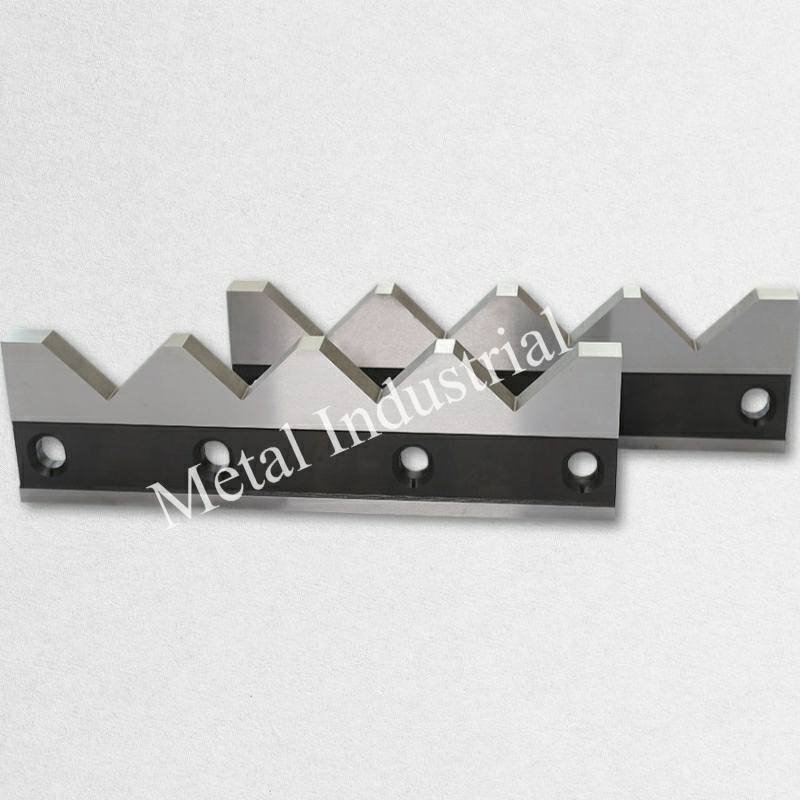
싱글 샤프트 파쇄기 칼날을 선택할 때는 칼날의 재질을 고려해야 합니다. 적절한 재질은 칼날의 수명을 늘리고 성능을 향상시킵니다. 난징 Metal 인더스트리얼은 칼날에 튼튼한 재질을 사용합니다. 덕분에 칼날은 튼튼하고 안정적으로 유지됩니다.
공구강
공구강은 파쇄기 칼날에 일반적으로 사용됩니다. 매우 단단하고 마모가 잘 되지 않습니다. 많은 파쇄기 공장에서 공구강을 사용합니다.
적합한 응용 프로그램
공구강은 플라스틱, 금속, 케이블, 고무 등을 파쇄하는 데 적합합니다. 이 칼날은 날카로워서 힘든 작업에도 오래 사용할 수 있습니다.
- D2 및 SKD-11: 금속, 플라스틱, 케이블 파쇄에 적합합니다.
- 고속강(HSS): 높은 정확도로 절단하는 데 가장 적합합니다.
- 냉간 가공용 다이스 강(9CrSi): 케이블 및 일부 금속에 적합합니다.
다음은 공구강의 종류와 그 경도를 보여주는 표입니다.
| 공구강 유형 | 형질 | 일반적인 경도 등급 |
|---|---|---|
| 고탄소강 | 매우 단단하고 쉽게 마모되지 않으며, 플라스틱이나 고무와 같은 부드러운 물건에 적합합니다. | 다양함, 일반적으로 높음 |
| 합금 공구강(D2) | 튼튼하고, 딱딱하며, 쉽게 닳지 않아 단단한 물건에 좋습니다. | 높음(HRC 58-62 정도) |
| 고속도강(HSS) | 정말 잘 자르고, 열과 무거운 작업에도 잘 견딥니다. | 매우 높음(최대 65HRC) |
| 냉간 가공용 다이스 강 | 케이블과 같은 일부 작업에 적합한 가격과 마모성의 균형이 좋습니다. | 중간~높음 |
장점과 단점
공구강은 마모가 잘 되지 않고 매우 정밀하기 때문에 매우 유용합니다. 다양한 작업에 사용할 수 있으며, 날카로움을 유지하므로 재활용하기에도 좋습니다.
| 재료 유형 | 장점 | 단점 |
|---|---|---|
| 공구강 | 빨리 마모되지 않으며 매우 정확하며 다양한 작업에 사용할 수 있습니다. | 쉽게 깨질 수 있음, 비용이 더 많이 들며, 특수 열처리가 필요함 |
이 칼날은 오래 사용할 수 있지만, 너무 세게 치면 부러질 수 있습니다. 공구강은 가격이 더 비싸고 특수 열처리가 필요합니다.
합금강
합금강은 파쇄기 칼날로 좋은 선택입니다. 이 칼날은 크거나 혼합된 폐기물을 파쇄하는 대형 파쇄기에 사용됩니다.
적합한 응용 프로그램
합금강은 혼합 폐기물, 큰 조각, 그리고 강한 충격을 견뎌야 하는 물건을 파쇄하는 데 적합합니다. 이 칼날은 튼튼하고 쉽게 부러지지 않습니다.
- CrMo 변형: 강력한 타격과 혼합 폐기물에 적합합니다.
- H13: 충격이나 열이 많은 작업에 적합합니다.
합금강의 종류와 그 장점을 보여주는 표는 다음과 같습니다.
| 재료 카테고리 | 일반적인 예 | 핵심 강점 | 잠재적인 약점 | 일반적인 사용 사례 |
|---|---|---|---|---|
| 공구강 | D2, SKD-11 | 빨리 마모되지 않음, 단단함 | 그렇게 힘들지 않아 | Metal, 플라스틱, 케이블 |
| 공구강 | H13 | 튼튼하고 열을 잘 견딥니다 | 더 빨리 마모됩니다 | 인기 있는 일자리, 인기 있는 일자리 |
| 합금강 | CrMo 변형 | 매우 튼튼하고 강한 타격에도 잘 견딥니다. | 더 빨리 마모됩니다 | 혼합 폐기물, 심각한 타격 |
| 고속도강 | M 시리즈, T 시리즈 | 날카로움을 유지, 단단함 | 비용이 더 많이 들고, 깨질 수 있습니다 | 정확한 절단, 분쇄기 |
| 냉간 가공 다이스 강 | 9CrSi | 천천히 닳아요, 가격도 좋아요 | 좋은 열처리가 필요합니다 | 케이블 작업, 일부 금속 |
장점과 단점
합금강은 매우 단단하고 강하며 질깁니다. 녹슬지 않고 열에도 잘 견딥니다.
| 재료 유형 | 장점 | 단점 |
|---|---|---|
| 합금강 | 매우 단단하고, 튼튼하고, 녹슬지 않으며, 열에 강함 | 비용이 더 많이 들고, 더 많은 관리가 필요합니다 |
이 칼날은 더 자주 관리해야 할 수도 있습니다. 가격은 더 비싸지만, 힘든 작업에도 튼튼합니다.
카바이드 팁
카바이드 팁 블레이드는 정말 힘든 작업에 가장 적합합니다. 이 블레이드는 매우 단단하면서도 마모되지 않아야 할 때 사용합니다.
적합한 응용 프로그램
카바이드 팁 블레이드는 금속, 고무, 질긴 플라스틱처럼 단단한 재료를 파쇄하는 데 적합합니다. 이 블레이드는 가동 시간이 많은 기계에 적합합니다.
- 단단한 물체를 손상 없이 잘라냅니다.
- 장시간 작동하는 분쇄기에 가장 적합합니다.
장점과 단점
카바이드 팁 블레이드는 매우 단단하여 강한 충격에도 잘 견딥니다. 날카로움이 오래 유지되며 자주 교체할 필요가 없습니다.
| 재료 유형 | 장점 | 단점 |
|---|---|---|
| 카바이드 팁 블레이드 | 매우 단단함, 마모되지 않음, 강한 타격에도 견딜 수 있음, 열에 강함 | 비용이 더 많이 들고, 수리하기 어렵고, 고장날 수 있습니다. |
이 칼날은 수명이 길어서 자주 수리할 필요가 없습니다. 힘든 작업에는 적합하지만, 고장이 나고 비용이 더 많이 들 수 있습니다.
팁: 파쇄기 칼날에 사용하는 소재에 따라 새 칼날이 필요한 빈도와 파쇄기 성능에 차이가 있습니다. 좋은 소재를 사용하면 재활용 시 시간과 비용을 절약할 수 있습니다.
재료 선택
싱글 샤프트 파쇄기에 적합한 칼날 소재를 선택하는 것이 중요합니다. 칼날 소재는 파쇄기의 성능을 높이고 수명을 연장하는 데 도움이 됩니다. 잘 자르고 시간이 지남에 따라 비용도 절감되는 칼날이 필요합니다. 각 소재에는 장단점이 있습니다. 파쇄할 폐기물의 종류와 작업 요구 사항에 맞는 칼날 소재를 선택하는 것이 좋습니다.
다양한 재료가 어떻게 작동하고 비용이 발생하는지 확인할 수 있습니다. 이 테이블:
| 재료 | 장점 | 단점 | 응용 |
|---|---|---|---|
| 고탄소강 | 매우 단단하고 비싸지 않으며 대부분의 폐기물에 좋습니다. | 녹이 슬기 쉬우므로 더 많은 관리가 필요합니다. | 목재 및 플라스틱에 가장 적합 |
| 합금강 | 천천히 마모되고 녹이 많이 슬지 않습니다. | 비용은 더 많이 들지만 더 오래 지속됩니다. | 금속 및 단단한 플라스틱에 적합 |
고탄소강 칼날은 나무, 플라스틱, 그리고 부드러운 물건을 파쇄하는 데 적합합니다. 단단하고 가격도 저렴합니다. 하지만 녹이 슬고 빨리 마모될 수 있으므로 관리가 필요합니다. 부드러운 폐기물을 주로 파쇄한다면 고탄소강이 현명한 선택입니다.
합금강 칼날은 더 어려운 작업에 더 강합니다. 내부에 특수 금속이 들어 있어 마모나 녹이 잘 슬지 않습니다. 칼날은 가격이 더 비싸지만 자주 교체할 필요는 없습니다. 금속이나 단단한 플라스틱을 파쇄하는 경우, 합금강 칼날을 사용하면 파쇄기의 수명이 더 길어집니다.
팁: 어떤 종류의 폐기물을 가장 많이 파쇄하는지 생각해 보세요. 딱딱하거나 혼합된 폐기물을 파쇄하는 경우, 합금 강철 칼날은 수명이 길어 비용을 절약할 수 있습니다.
파쇄기를 얼마나 자주 사용하는지, 그리고 얼마나 많은 폐기물이 발생하는지도 생각해 보세요. 파쇄기를 많이 사용한다면 고급 합금이나 카바이드 팁처럼 튼튼한 칼날이 가장 좋습니다. 이러한 칼날은 날카로움이 오래가고 쉽게 마모되지 않습니다.
어떤 칼날은 자주 갈고 청소해야 합니다. 반면, 어떤 칼날은 더 오래 날카로움을 유지하고 관리가 덜 필요합니다. 적절한 칼날 소재를 선택하면 장기적으로 비용을 절약할 수 있습니다.
단일 샤프트 파쇄기 블레이드는 제대로 작동하려면 견고하고 튼튼한 소재가 필요합니다. 적절한 소재를 선택하면 파쇄기의 성능이 향상되고 운영 비용도 절감됩니다. 최상의 결과를 얻으려면 항상 파쇄 작업에 적합한 블레이드 소재를 선택하십시오.
단일 샤프트 분쇄기 블레이드 유형

평평한
구조적 특징
플랫 블레이드는 직사각형 모양입니다. 절단을 위한 직선 날이 있으며, 표면은 매끄럽고 평평합니다. 이 블레이드는 파쇄기 샤프트에 단단히 고정됩니다. 넓은 날이 재료에 많은 부분을 닿습니다. 플랫 블레이드는 다양한 크기와 두께로 제공됩니다.
적합한 재료
플랫 블레이드는 부드럽거나 중간 정도 단단한 재료에 적합합니다. 플라스틱, 종이, 직물, 그리고 일부 목재에도 사용할 수 있습니다. 직선적이고 깔끔한 절단면을 원할 때 가장 좋습니다.
장점과 단점
| 장점 | 단점 |
|---|---|
| 날카롭게 하기 쉽다 | 딱딱한 폐기물에는 적합하지 않습니다 |
| 착용하기 간편함 | 단단한 물건에서는 더 빨리 마모됩니다. |
| 깨끗한 절단을 만듭니다 | 신축성 있는 물건에 미끄러질 수 있음 |
평평한 칼날은 여러 작업에 적합합니다. 빠르게 날을 세울 수 있지만, 너무 질기거나 늘어나는 재료에는 적합하지 않습니다.
일반적인 응용 프로그램
- 재활용을 위한 플라스틱 파쇄
- 종이와 판지 자르기
- 원단 및 섬유 절단
- 가벼운 목재를 쪼개다
팁: 부드러운 물건을 쉽게 관리하고 깔끔하게 자르고 싶다면 평평한 칼날을 선택하세요.
훅
구조적 특징
갈고리 모양의 칼날은 끝이 휘어져 있습니다. 갈고리는 물건을 파쇄기로 끌어당기는 역할을 합니다. 칼날은 마치 발톱이나 구부러진 손가락처럼 생겼습니다. 갈고리를 고정하는 두꺼운 바닥이 있습니다. 이 모양은 파쇄 시 더 큰 힘을 발휘합니다.
적합한 재료
후크 블레이드는 크고 신축성이 있거나 질긴 물체에 적합합니다. 타이어, 케이블, 고무, 혼합 폐기물 등에 사용할 수 있습니다. 후크 모양은 걸림을 방지하고 물체가 계속 움직이도록 합니다.
장점과 단점
| 장점 | 단점 |
|---|---|
| 큰 물건을 끌어당긴다 | 만들기가 더 어렵다 |
| 막힘을 막는다 | 부드러운 것에는 적합하지 않습니다 |
| 신축성 있는 소재에 잘 어울립니다. | 비용이 더 많이 들 수 있습니다 |
후크 칼날은 크거나 늘어나는 물건을 파쇄하는 데 효과적입니다. 파쇄기가 잘 작동하도록 도와줍니다. 후크 칼날은 가격이 더 비쌀 수 있지만, 단단한 작업에 더 효과적입니다.
일반적인 응용 프로그램
- 타이어와 고무 파쇄
- 케이블 및 전선 절단
- 혼합폐기물 처리
- 큰 플라스틱 품목 분해
참고: 후크 블레이드는 크거나 늘어나는 물건에 적합하며 걸림을 방지하는 데 도움이 됩니다.
오목한
구조적 특징
오목한 칼날은 날이 안쪽으로 휘어져 있습니다. 가운데 부분이 얕은 그릇처럼 아래로 움푹 패여 있습니다. 이 모양이 재료에 더 많이 닿습니다. 오목한 칼날은 종종 더 강한 날을 가지고 있어 더 강력한 힘을 발휘합니다.
적합한 재료
오목한 칼날은 단단하고 두껍거나 특이한 모양의 물체를 자르는 데 사용됩니다. 금속, 두꺼운 플라스틱, 무거운 목재 등에 사용할 수 있습니다. 곡선 모양의 날은 단단한 물체를 잡고 자르는 데 도움이 됩니다.
장점과 단점
| 장점 | 단점 |
|---|---|
| 특이한 모양을 잘 잡습니다 | 날카롭게 하는 게 더 어렵다 |
| 두껍거나 단단한 것을 자릅니다. | 특별한 피팅이 필요할 수 있습니다 |
| 파쇄 중 미끄러짐 방지 | 더 무거울 수 있습니다 |
오목한 칼날은 단단하거나 특이한 모양의 물건을 다루는 데 도움이 됩니다. 미끄러짐을 방지하고 절단력을 높여줍니다. 칼날을 갈거나 장착하려면 특수 공구가 필요할 수 있습니다.
일반적인 응용 프로그램
- 금속 조각 파쇄
- 단단한 플라스틱 절단
- 나무 블록 가공
- 산업 폐기물 처리
팁: 딱딱하거나 고르지 않은 물체를 다룰 때는 오목한 칼날을 사용하면 그립력과 힘이 더 강해집니다.
맞춤형/OEM
구조적 특징
맞춤형 및 OEM 칼날은 특수한 파쇄 문제 해결에 도움이 됩니다. 칼날의 크기, 모양, 날 종류를 선택할 수 있습니다. 홈이나 갈고리가 있는 칼날도 있고, 교체 가능한 칼날이 있는 칼날도 있습니다. 이를 통해 오래된 부품을 빠르게 교체할 수 있습니다. 파쇄기는 멈추지 않고 더 오래 작동합니다. 칼날의 강도와 두께도 선택할 수 있습니다. 이는 기기와 파쇄할 대상에 맞게 선택할 수 있도록 도와줍니다.
적합한 재료
맞춤형 또는 OEM 블레이드는 거의 모든 소재에 적합합니다. 이 블레이드는 다음과 같은 작업에 적합합니다.
- 모든 종류의 플라스틱
- 고무와 타이어
- Metal는 알루미늄과 강철을 좋아합니다
- 섬유 및 가죽
- 나무와 종이
- 전자 폐기물
맞춤형 칼날은 고객님의 필요에 맞춰 제작됩니다. 재활용, 제작 등 다양한 작업에 활용 가능합니다.
장점과 단점
맞춤형 및 OEM 블레이드에는 많은 장점이 있습니다.
- 이 제품은 귀하의 기계에 완벽하게 들어맞습니다.
- 그들은 특별한 모양이나 재료를 다룬다.
- 이를 통해 파쇄 속도가 더 빠르고 더 좋아졌습니다.
- 쉽게 교체할 수 있는 칼날로 가동 중지 시간을 줄였습니다.
하지만 생각해야 할 몇 가지 사항이 있습니다.
- 맞춤형 칼날을 만드는 데는 시간이 더 많이 걸립니다.
- 특수 기능을 사용하려면 추가 비용이 발생할 수 있습니다.
참고: 맞춤형 블레이드는 일반 블레이드로는 해결할 수 없는 문제를 해결합니다. 특별한 기능이 필요할 때 유용합니다.
일반적인 응용 프로그램
맞춤형 및 OEM 블레이드는 다양한 작업에 사용됩니다. 다음은 다양한 산업에서 이러한 블레이드를 어떻게 사용하는지 보여주는 표입니다.
| 적용 분야 | 설명 |
|---|---|
| 특수 포장 | 맞춤형 블레이드를 사용하면 포장 작업을 더 빠르고 깨끗하게 진행할 수 있습니다. |
| 식품 가공 | 특수 칼날이 음식을 안전하고 빠르게 자릅니다. |
| 의료기기 제조 | 맞춤형 칼날을 사용하면 의료 부품을 안전하고 정확하게 절단할 수 있습니다. |
| 섬유 및 가죽 산업 | 특수 칼날은 질긴 원단과 가죽을 자릅니다. |
| 자동차 및 항공우주 | 맞춤형 블레이드는 자동차 및 비행기 부품에 대한 엄격한 규정을 충족합니다. |
| 전자 제조 | 특수 칼날은 작은 전자 부품을 절단합니다. |
| 재활용 및 폐기물 처리 | 맞춤형 칼날은 모든 종류의 폐기물을 파쇄하는 데 도움이 됩니다. |
| 연구개발 | 맞춤형 블레이드는 새 프로젝트와 테스트 프로젝트에 도움이 됩니다. |
맞춤형 칼날을 사용하면 작업에 맞는 도구를 선택할 수 있습니다. 더 나은 결과를 얻고 문제도 줄어듭니다.
재료별 성능 비교
플라스틱
플라스틱을 파쇄할 때는 깔끔한 절단과 빠른 속도가 중요합니다. 평평한 칼날은 대부분의 플라스틱에 적합합니다. 톱니 모양과 R자 모양의 칼날은 질기거나 여러 겹으로 겹쳐진 플라스틱에 적합합니다. 맞춤형 칼날은 특수한 모양이나 여러 가지 플라스틱이 섞인 플라스틱에 적합합니다. 적합한 칼날은 막힘을 방지하고 파쇄를 원활하게 합니다.
고무 산업
고무와 타이어에는 튼튼한 날이 필요합니다. 갈고리 모양과 오목한 모양의 날은 고무를 잡아 찢습니다. 톱니 모양의 날은 미끄러짐을 방지합니다. 두껍거나 신축성 있는 고무에는 맞춤형 날을 사용하는 것이 좋습니다. 적절한 날을 사용하면 속도가 빨라지고 걸림 현상이 줄어듭니다.
금속
Metal에는 날카롭고 튼튼한 칼날이 필요합니다. 오목한 칼날과 맞춤형 칼날은 금속 조각을 잡고 절단합니다. 톱니 모양의 날은 여러 겹으로 겹쳐지거나 뭉쳐진 금속을 절단하는 데 효과적입니다. 맞춤형 칼날은 특이한 모양이나 혼합 금속에 적합합니다. 적합한 칼날은 더 오래 사용할 수 있고 안전하게 파쇄할 수 있습니다.
팁: 항상 소재에 맞는 칼날을 선택하세요. 이렇게 하면 파쇄기의 수명이 길어지고 성능도 향상됩니다.
대형 폐기물을 위한 다중 샤프트 및 클로 디자인
디자인 개요
다축 파쇄기는 두 개 이상의 축을 사용합니다. 각 축에는 여러 개의 날이 있습니다. 갈고리 모양의 칼날은 갈고리 모양입니다. 가구나 타이어처럼 큰 폐기물을 잡아당겨 파쇄합니다. 여러 날이 함께 작동하여 큰 물건을 빠르게 파쇄합니다.
| 분쇄기 유형 | 장점 | 제한 사항 |
|---|---|---|
| 단일 샤프트 | 많은 물건을 잘게 찢고, 다양한 작업에 활용하고, 큰 품목을 처리합니다. | 금속과 타이어에는 좋지 않으며 더 많은 관리가 필요합니다. |
| 듀얼 샤프트 | 힘든 작업을 처리하고 혼합되거나 더러운 폐기물을 분쇄합니다. | 작고 균일한 조각이 만들어지지 않을 수도 있습니다. |
| 4축 | 작고 균일한 조각으로 만들고, 딱딱한 물건을 잘게 찢습니다. | 쉬운 작업에는 너무 많을 수 있습니다 |
응용 프로그램 예제
크고 질긴 폐기물이 있는 곳에서는 여러 개의 샤프트와 클로 디자인을 볼 수 있습니다. 몇 가지 예는 다음과 같습니다.
- 가구나 가전제품을 파쇄하는 재활용 센터
- 타이어 재활용 공장
- 대형 플라스틱이나 금속 드럼을 파쇄하는 공장
- 대형 쓰레기를 처리하는 도시 쓰레기 처리장
이러한 디자인을 사용하면 큰 물건을 더 빠르고 쉽게 파쇄할 수 있습니다. 더 나은 결과를 얻고 가동 중단 시간도 단축됩니다.
블레이드 선택
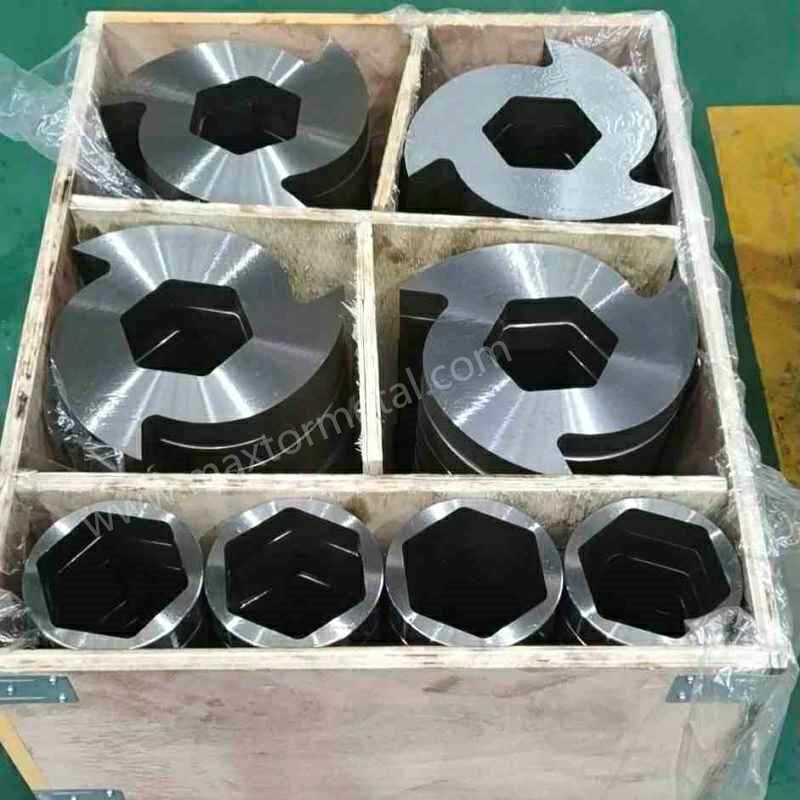
파쇄기에 적합한 칼날을 선택하면 작업이 더욱 쉽고 효율적입니다. 무엇을 파쇄할지, 얼마나 파쇄할지, 그리고 파쇄기로 어떤 작업을 할지 신중하게 고려해야 합니다. 이 섹션에서는 필요에 맞는 최고의 싱글 샤프트 파쇄기 칼날 디자인을 선택하는 데 도움을 드립니다.
애플리케이션 매치
재료 유형 고려 사항
칼날은 항상 파쇄하려는 재료에 맞춰야 합니다. 각 재료는 고유한 경도와 강도를 가지고 있습니다. 잘못된 칼날을 선택하면 칼날이 빨리 마모되거나 잘리지 않을 수 있습니다.
- 재료의 경도 및 강도: 금속처럼 단단한 재료는 더 강한 칼날이 필요합니다. 플라스틱이나 종이처럼 부드러운 재료는 날카로움을 유지하지만, 그렇게 강할 필요는 없습니다.
- 블레이드 소재 선택: 일부 블레이드는 높은 내마모성을 위해 제작되고, 다른 블레이드는 날카로움이나 유연성을 위해 제작됩니다.
- 유지관리 및 관리: 단단한 재료를 분쇄하는 경우 칼날을 더 자주 점검하고 관리해야 합니다.
팁: 어떤 종류의 폐기물을 가장 많이 처리하는지 항상 확인하세요. 이를 통해 작업에 맞는 칼날을 선택할 수 있습니다.
파쇄량 및 빈도
파쇄량과 빈도에 따라 칼날 선택이 달라집니다. 파쇄기를 하루 종일 사용한다면, 더 오래가고 관리가 덜 필요한 칼날이 필요합니다.
- 파쇄되는 재료: 폐기물의 종류에 따라 칼날이 마모되는 속도가 달라집니다.
- 생산량: 대량 분쇄 작업에는 기계를 계속 작동시키기 위해 내구성 있는 칼날이 필요합니다.
- 유지관리 주기: 유지관리를 위해 멈추는 횟수를 줄이고 싶다면 내마모성이 높은 블레이드를 선택하세요.
- 예산: 지금 얼마를 쓰고 나중에 얼마를 저축할지 생각해 보세요.
- 열처리: 열처리가 잘 된 칼날은 수명이 길고 성능이 뛰어납니다.
파쇄 일정에 맞는 칼날을 선택하면 시간과 비용을 절약할 수 있습니다.
분쇄기 모델과의 호환성
모든 칼날이 모든 파쇄기에 적합한 것은 아닙니다. 칼날이 기기의 크기와 출력에 맞는지 확인해야 합니다. 파쇄기 설명서를 확인하거나 공급업체에 문의하세요. 적합한 칼날을 사용하면 기기를 안전하게 보호하고 더 오래 사용할 수 있습니다.
성능 요구 사항
원하는 출력 크기 및 균일성
파쇄할 조각의 크기를 얼마나 작게 할지 생각해 보세요. 어떤 작업에는 작고 균일한 조각이 필요하고, 어떤 작업에는 잔여물만 더 작게 하면 됩니다. 칼날의 모양과 스타일은 결과물의 크기와 모양에 영향을 미칩니다.
- 전자 제품이나 섬유 제품 같은 작업에는 높은 절단 정밀도가 중요합니다. 이는 폐기물을 줄이고 품질을 향상시키는 데 도움이 됩니다.
- 올바른 블레이드 형상을 사용하면 더 깔끔한 절단과 더 나은 결과를 얻을 수 있습니다.
처리량 및 효율성 요구 사항
많은 양의 재료를 빠르게 파쇄하려면 그에 맞는 칼날이 필요합니다. 칼날의 모양과 각도가 중요합니다.
- 칼날의 모양은 재질과 기계 작동 방식에 맞춰야 합니다. 이렇게 하면 더 빨리 파쇄하고 에너지를 절약할 수 있습니다.
- 날의 모양과 각도는 얼마나 깔끔하고 빠르게 절단할 수 있는지에 영향을 미칩니다. 적절한 디자인은 힘을 덜 주고 더 매끄럽게 절단할 수 있음을 의미합니다.
팁: 가장자리가 들쭉날쭉하거나 소재가 늘어진 경우 다른 칼날 디자인이 필요할 수 있습니다.
내구성 및 내마모성
최대한 오래 사용할 수 있는 칼날을 원하실 겁니다. 내구성이 뛰어난 칼날은 다운타임을 줄이고 비용을 절감해 줍니다. 열처리가 잘 된 튼튼한 소재로 만들어진 칼날을 찾으세요. 정기적인 관리와 연삭 또한 칼날을 오래 사용하는 데 도움이 됩니다.
비용 대 수명
초기 투자 vs. 장기 저축
처음에는 고품질 칼날에 더 많은 비용을 지불해야 할 수 있지만, 시간이 지남에 따라 비용을 절감할 수 있습니다. 내구성이 뛰어난 칼날은 교체 횟수와 유지 관리가 적습니다. 즉, 분쇄기가 멈추지 않고 더 오래 작동할 수 있습니다.
유지 보수 및 교체 비용
유지 보수 비용은 사용하는 파쇄기 종류에 따라 달라질 수 있습니다. 다음 표는 그 차이를 보여줍니다.
| 특징 | 단일 샤프트 분쇄기 | 더블 샤프트 분쇄기 |
|---|---|---|
| 유지 보수 비용 | 구조가 간단하고 유지관리 비용이 낮음 | 구조가 복잡할수록 유지관리 비용이 높아짐 |
단일 샤프트 파쇄기 칼날 디자인은 유지 관리 비용이 적게 드는 경우가 많습니다. 수리에 드는 시간과 비용을 줄일 수 있습니다.
OEM/ODM 맞춤형 서비스의 가치
맞춤형 칼날은 고객의 필요에 가장 잘 맞는 제품을 제공합니다. OEM 및 ODM 서비스를 통해 칼날의 크기, 모양, 재질을 직접 선택할 수 있습니다. 또한, 특수 파쇄 문제에 대한 기술 지원도 받으실 수 있습니다. 이를 통해 더 나은 결과를 얻고 가동 중단 시간을 줄일 수 있습니다.
참고: 경험이 풍부한 공급업체와 협력하면 맞춤형 솔루션을 얻을 수 있습니다.
블레이드 선택을 위한 최종 팁
- 칼날은 분쇄하려는 재료와 양에 맞게 선택하세요.
- 출력 크기와 작업 속도를 생각해 보세요.
- 가동 중단 시간을 줄이려면 내구성이 뛰어난 블레이드를 선택하세요.
- 초기 비용과 장기적 절감액의 균형을 맞추세요.
- 특수 작업이나 기계에 맞는 맞춤형 칼날을 고려하세요.
- 신뢰할 수 있는 공급업체와 협력하여 최고의 조언과 지원을 받으세요.
올바른 단일 샤프트 분쇄기 블레이드 디자인을 선택하면 폐기물을 보다 효율적으로 처리하고 재활용 목표를 달성하는 데 도움이 됩니다.
유지
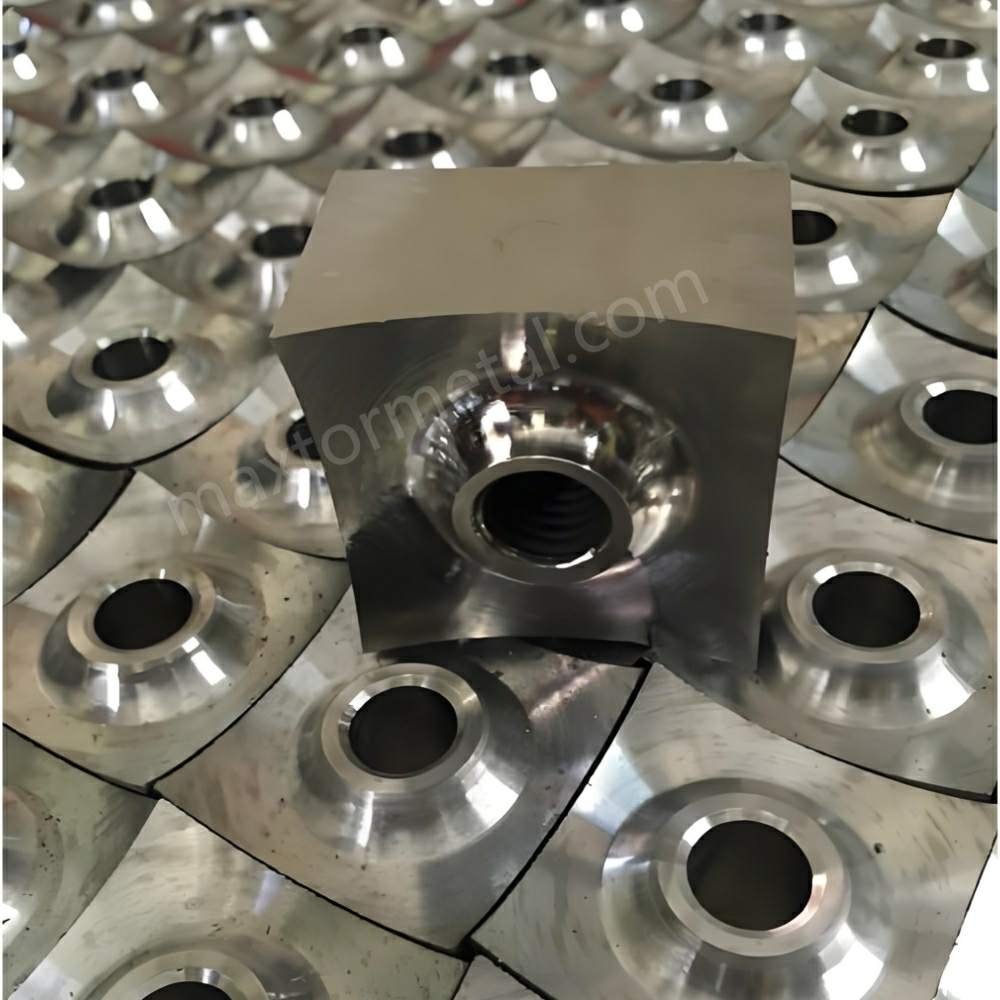
점검
파쇄기 작동을 원활하게 유지하려면 파쇄기 날을 자주 점검해야 합니다. 정기적인 점검은 문제가 악화되기 전에 발견하는 데 도움이 됩니다. 날의 수명을 연장하기 위한 몇 가지 방법은 다음과 같습니다.
- 매주 칼날에 균열, 흠집, 둔한 모서리가 있는지 확인하세요.
- 모든 볼트와 패스너가 단단히 조여져 있는지 확인하세요.
- 칼날 표면에 고르지 못한 마모나 손상 흔적이 있는지 살펴보세요.
- 작동 중 이상한 소리가 나는지 확인하세요. 이는 칼날이 느슨하거나 손상되었을 수 있음을 의미합니다.
- 전체 점검 및 수리를 위해 가동 중지 시간을 예약하세요. 이렇게 하면 갑작스러운 고장을 방지하는 데 도움이 됩니다.
- 문제 발생 징후를 조기에 발견할 수 있도록 팀을 교육하세요. 효과적인 교육은 모든 직원이 파쇄기를 안전하고 효율적으로 관리하는 데 도움이 됩니다.
팁: 신뢰할 수 있는 공급업체의 고품질 교체 부품만 사용하세요. 이렇게 하면 분쇄기의 수명이 길어지고 성능도 향상됩니다.
청소
안전하고 매끄러운 파쇄를 위해서는 칼날을 깨끗하게 유지하는 것이 중요합니다. 먼지와 잔여물은 칼날을 더 빨리 무뎌지게 할 수 있습니다. 사용 후에는 칼날을 세척해야 합니다. 다음은 몇 가지 세척 팁입니다.
- 부드러운 천과 따뜻한 비눗물로 칼날을 닦으세요.
- 칼날을 긁을 수 있는 강한 화학 물질이나 거친 패드의 사용은 피하세요.
- 녹이 생기는 것을 막으려면 칼날을 바로 말리세요.
- 분쇄기를 다시 작동시키기 전에 끼어 있는 폐기물 조각을 제거하세요.
깨끗한 칼날은 절단력을 높이고 기계 작동 시 수고를 덜어줍니다. 또한, 칼날이 깨끗하면 손상을 조기에 발견하는 데 도움이 됩니다.
날카롭게하다
날카로운 칼날은 파쇄기의 효율성을 높여줍니다. 무딘 칼날은 작업 속도를 저하시키고 기계 마모를 증가시킬 수 있습니다. 칼날이 잘 절단되지 않는 경우 칼날을 갈아야 합니다. 칼날 갈기 팁은 다음과 같습니다.
- 날카로움을 유지하기 위해 사용하기 전에 칼날을 가볍게 갈아주세요.
- 칼날이 둔해지면 숫돌, 날카롭게 하는 시스템 또는 전기 날카롭게 하는 기구를 사용하세요.
- 항상 제조사의 지침에 따라 날을 세우세요.
- 칼날을 칼날 보호대나 선반 등 안전한 곳에 보관하면 더 오랫동안 날카로움을 유지할 수 있습니다.
참고: 정기적으로 칼날을 갈고 적절하게 보관하면 싱글 샤프트 분쇄기 칼날 디자인을 최대한 활용하는 데 도움이 됩니다.
문제 예방
싱글 샤프트 파쇄기 칼날 설계로 인한 많은 문제를 현명한 습관을 통해 예방할 수 있습니다. 문제 발생을 미리 예방하면 파쇄기 수명이 늘어나고 칼날이 날카로워집니다. 문제가 발생하기 전에 예방하면 시간과 비용을 절약할 수 있습니다.
먼저 파쇄기를 올바르게 사용하는 것부터 시작하세요. 항상 적정량의 재료를 기계에 투입하세요. 파쇄기에 재료를 너무 많이 넣으면 칼날이 더 빨리 마모될 수 있습니다. 질긴 재료를 파쇄하는 경우, 칼날 종류를 확인하고 재료에 맞는지 확인하세요. 예를 들어, 후크 칼날은 부피가 큰 폐기물에 더 적합하고, 플랫 칼날은 부드러운 플라스틱에 적합합니다.
작동 중 분쇄기를 점검하세요. 갈리는 소리나 쿵쿵거리는 소리와 같은 이상한 소리가 나는지 확인하세요. 이러한 소음은 칼날이 느슨하거나 손상되었을 수 있습니다. 고르지 않게 잘리거나 분쇄 속도가 느린지 확인하세요. 이러한 징후가 나타나면 기계를 멈추고 칼날을 점검하세요. 신속한 조치가 더 큰 문제를 예방할 수 있습니다.
작업 공간을 깨끗하게 유지하세요. 사용 후에는 분쇄기에 남아 있는 잔여물을 제거하세요. 먼지와 이물질은 칼날이 무뎌지거나 걸리게 할 수 있습니다. 깨끗한 칼날은 균열이나 이물질을 조기에 발견하는 데에도 도움이 됩니다.
팀원들에게 안전 수칙을 준수하도록 교육하세요. 모든 직원에게 칼날 점검 방법과 파쇄기 안전 사용 방법을 교육하세요. 적절한 교육은 사고 위험을 줄이고 재활용 과정을 원활하게 유지하는 데 도움이 됩니다.
유지 관리 일정을 세우세요. 칼날을 점검하고, 청소하고, 날을 갈 때 기록해 두세요. 정기적인 관리는 작은 문제가 커지기 전에 발견하는 데 도움이 됩니다. 간단한 표를 사용하여 유지 관리 일정을 추적할 수 있습니다.
| 일 | 빈도 | 노트 |
|---|---|---|
| 점검 | 주간 | 손상을 찾아보세요 |
| 청소 | 사용 후 | 잔해물 제거 |
| 날카롭게하다 | 월간 간행물 | 블레이드 가장자리를 확인하세요 |
| 매끄럽게 하기 | 월간 간행물 | 오일 이동 부품 |
팁: 칼날이 너무 빨리 마모되는 것을 발견하면 공급업체에 문의하십시오. Nanjing Metal Industrial은 단일 샤프트 파쇄기 칼날 설계에 대한 지원과 조언을 제공합니다. 담당팀이 적합한 칼날을 선택하도록 돕고 칼날 수명을 늘리는 방법을 알려드립니다.
고품질 칼날과 교체 부품을 선택하세요. 신뢰할 수 있는 공급업체에서 칼날의 강도와 날카로움을 테스트합니다. 이를 통해 예상치 못한 고장을 방지하고 파쇄기의 원활한 작동을 유지할 수 있습니다.
파쇄 속도나 출력 크기 변화에 주의하세요. 이러한 변화는 칼날에 문제가 있음을 나타낼 수 있습니다. 문제를 조기에 해결하면 재활용 목표를 달성하고 가동 중단 시간을 줄이는 데 도움이 됩니다.
다음 단계를 따르면 대부분의 칼날 문제를 예방할 수 있습니다. 좋은 습관과 정기적인 관리는 싱글 샤프트 파쇄기 칼날의 수명을 연장하고 모든 종류의 폐기물을 손쉽게 처리하는 데 도움이 됩니다.
블레이드 교체
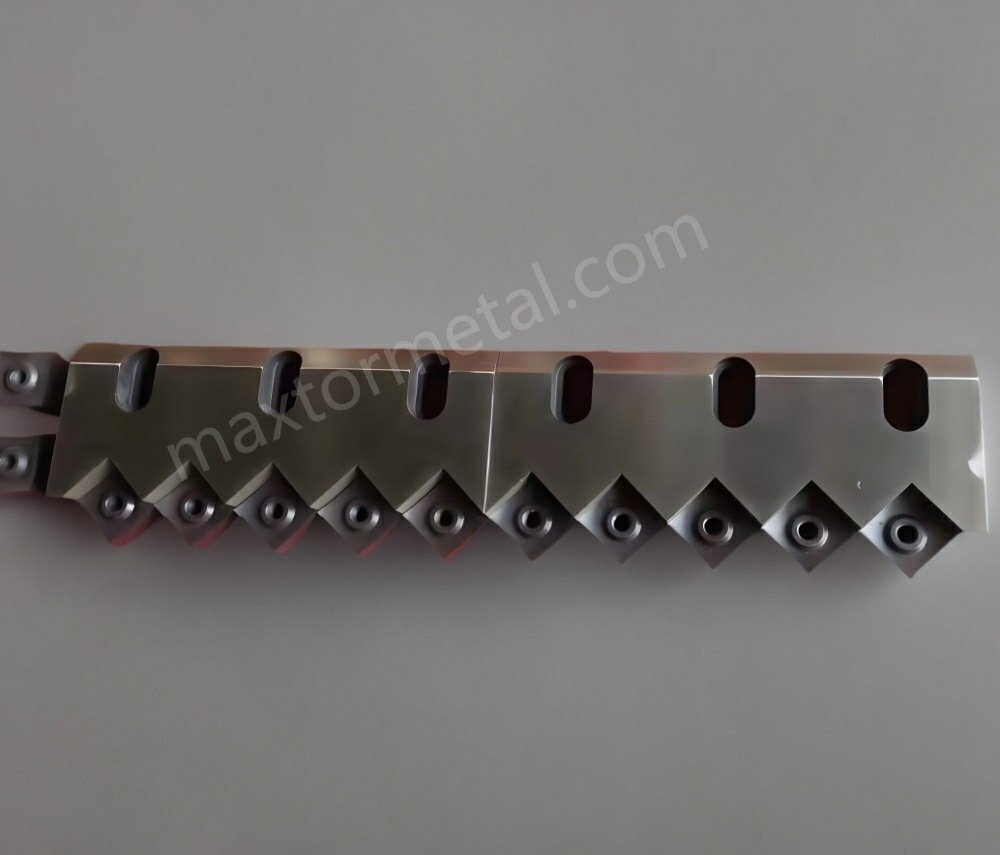
준비
파쇄기 날을 교체하기 전에 준비해야 합니다. 철저한 준비는 안전을 보장하고 작업을 더 빨리 완료하는 데 도움이 됩니다. 먼저 파쇄기 전원을 끄고 플러그를 뽑으세요. 모든 움직이는 부품이 멈출 때까지 기다리세요. 손과 눈을 보호하기 위해 안전 장갑과 보안경을 착용하세요. 렌치, 드라이버, 청소용 천 등 적절한 도구를 준비하세요. 단일 샤프트 파쇄기 날 디자인에 대한 특별 지침은 설명서를 참조하세요.
파쇄기 주변에 잔여물이 있는지 확인하세요. 칼날 근처에 끼어 있는 조각들을 제거하세요. 작업 공간을 깨끗이 정리하여 작업 상황을 확인하세요. 새 칼날을 배치하고 균열이나 흠집이 있는지 확인하세요. 기기에 맞는 칼날 유형을 사용하고 있는지 확인하세요. 맞춤형 칼날을 사용하는 경우, 크기와 모양이 파쇄기와 일치하는지 확인하세요.
팁: 항상 여분의 칼날을 준비해 두세요. 재활용 작업 중 장시간 지연을 방지하는 데 도움이 됩니다.
제거
기존 칼날은 조심스럽게 제거해야 합니다. 먼저 칼날을 고정하고 있는 볼트나 나사를 풀어주세요. 볼트가 손상되지 않도록 적절한 도구를 사용하세요. 칼날을 하나씩 꺼내세요. 기존 칼날은 작업 공간에서 떨어진 안전한 곳에 놓으세요. 사용한 칼날을 다룰 때는 날카로운 모서리에 주의하세요.
샤프트와 장착 부위에 손상이 있는지 확인하세요. 먼지나 잔여물을 깨끗이 제거하세요. 깊은 긁힘이나 움푹 들어간 부분이 보이면 새 블레이드를 설치하기 전에 수리해야 할 수 있습니다. 볼트와 패스너를 점검하세요. 마모되었거나 녹슨 부분이 있으면 교체하세요.
칼날 제거를 위한 간단한 체크리스트는 다음과 같습니다.
- 볼트와 나사를 풀어줍니다.
- 칼날을 하나씩 제거하세요.
- 오래된 칼날은 안전한 곳에 보관하세요.
- 샤프트와 장착 부위를 청소하세요.
- 손상 여부를 검사하세요.
참고: 제거 작업을 서두르지 마세요. 세심하게 작업하면 사고를 예방하고 분쇄기를 좋은 상태로 유지할 수 있습니다.
설치
새 블레이드를 설치할 때는 주의해서 설치해야 합니다. 각 블레이드를 샤프트에 놓고 장착 구멍과 일치하도록 합니다. 새 볼트나 깨끗한 볼트를 사용하여 블레이드를 고정합니다. 블레이드가 평평하게 고정되고 흔들리지 않도록 각 볼트를 균등하게 조입니다. 올바른 토크 설정은 설명서를 참조하십시오.
모든 칼날을 설치한 후, 손으로 샤프트를 돌려서 부드럽게 움직이는지 확인하세요. 칼날이 서로 닿거나 파쇄기 벽면에 닿지 않도록 하세요. 문제가 발견되면 기계를 작동하기 전에 칼날을 조정하세요.
설치 단계를 기억하는 데 도움이 되는 표는 다음과 같습니다.
| 단계 | 행동 |
|---|---|
| 위치 블레이드 | 장착 구멍에 맞춰 정렬 |
| 볼트 삽입 | 새 볼트나 깨끗한 볼트를 사용하세요 |
| 볼트를 조이세요 | 균일한 압력, 정확한 토크 |
| 정렬 확인 | 손으로 샤프트를 돌리다 |
| 최종 검사 | 틈새나 접촉을 찾으세요 |
팁: 항상 싱글 샤프트 파쇄기 칼날 설계에 대한 지침을 따르세요. 올바르게 설치하면 폐기물을 안전하게 파쇄하고 재활용 과정을 원활하게 진행할 수 있습니다.
안전 점검
파쇄기에 새 칼날 설치를 완료한 후에는 작동 전에 안전 점검을 수행해야 합니다. 이 단계는 사고를 예방하고 단일 샤프트 파쇄기의 칼날이 최상의 성능을 유지하도록 도와줍니다. 다음 체크리스트를 따라 파쇄기가 안전하고 사용 준비가 되었는지 확인하십시오.
- 보호 장비를 착용하세요
항상 보안경, 장갑, 헬멧, 방진 마스크를 착용하세요. 이러한 장비는 칼날 교체 시 날카로운 모서리와 날아오는 파편으로부터 작업자를 보호해 줍니다. - 분쇄기 전원을 끄고 고정하세요
파쇄기의 플러그를 뽑아 실수로 작동되지 않도록 하세요. 가능하면 전원을 차단하세요. 이렇게 하면 작업 중 안전을 확보할 수 있습니다. - 보호 가드를 검사하세요
파쇄기의 보호 가드가 제대로 장착되어 있고 손상되지 않았는지 확인하세요. 보호 가드는 작동 중 폐기물 조각이 튀는 것을 방지합니다. - 메인 샤프트와 플랜지 청소
메인 샤프트와 플랜지를 닦으세요. 두 부분 모두 평평하고 깨끗하며 샤프트와 수직을 이루는지 확인하세요. 먼지나 이물질이 남아 있으면 블레이드가 고르지 않게 놓일 수 있습니다. - 블레이드 정렬 및 반경 방향 런아웃 확인
새 칼날을 샤프트에 장착하세요. 칼날이 똑바로 정렬되고 흔들리지 않는지 확인하세요. 메인 샤프트의 방사형 런아웃과 스윙을 확인하세요. 칼날이 올바르게 정렬되면 분쇄기가 폐기물을 고르게 절단하고 손상을 방지하는 데 도움이 됩니다. - 올바른 플랜지 크기를 사용하세요
큰 플랜지를 사용하여 칼날을 고정하세요. 얇은 칼날의 경우 플랜지는 칼날 지름의 약 절반 정도여야 합니다. 두꺼운 칼날의 경우 3분의 1 정도면 충분합니다. 이렇게 하면 사용 중 칼날이 미끄러지는 것을 방지할 수 있습니다. - 플랜지 너트를 제대로 조이세요
플랜지 너트를 적절한 힘으로 고정하세요. 너무 세게 조이거나 느슨하게 조이지 마세요. 제대로 조이면 블레이드가 움직이거나 내부가 손상되는 것을 방지할 수 있습니다. - 합금 팁 보호
합금 팁이 깨지거나 손상되지 않도록 칼날을 조심스럽게 다루십시오. 팁이 손상되면 파쇄 성능과 안전에 영향을 미칠 수 있습니다. - 테스트 블레이드 회전
설치 후 샤프트를 손으로 돌려주세요. 칼날이 약 30초 동안 자유롭게 회전하도록 두세요. 이상한 소리가 나는지, 그리고 움직임이 원활한지 확인하세요. 문제가 발견되면 작동을 멈추고 문제를 해결한 후 분쇄기를 작동하세요. - 최종 시각 검사
전체 조립품을 살펴보세요. 모든 볼트가 단단히 조여져 있는지, 작업 공간이 깨끗한지, 그리고 날을 막는 것이 없는지 확인하세요. 모든 도구와 헐거운 물건들을 제거했는지 다시 한번 확인하세요.
팁: 안전 점검을 절대 건너뛰지 마세요. 꼼꼼한 점검은 본인, 팀, 그리고 장비를 보호합니다. 또한, 올바른 안전 습관은 재활용 과정을 원활하게 진행하고 사고로 인한 가동 중단 시간을 줄이는 데 도움이 됩니다.
다음 단계를 따르면 단일 샤프트 파쇄기 칼날 설계가 안전하고 효과적으로 유지됩니다. 또한, 파쇄기가 모든 종류의 폐기물을 더 적은 위험으로 처리할 수 있도록 도와줍니다.
모범 사례
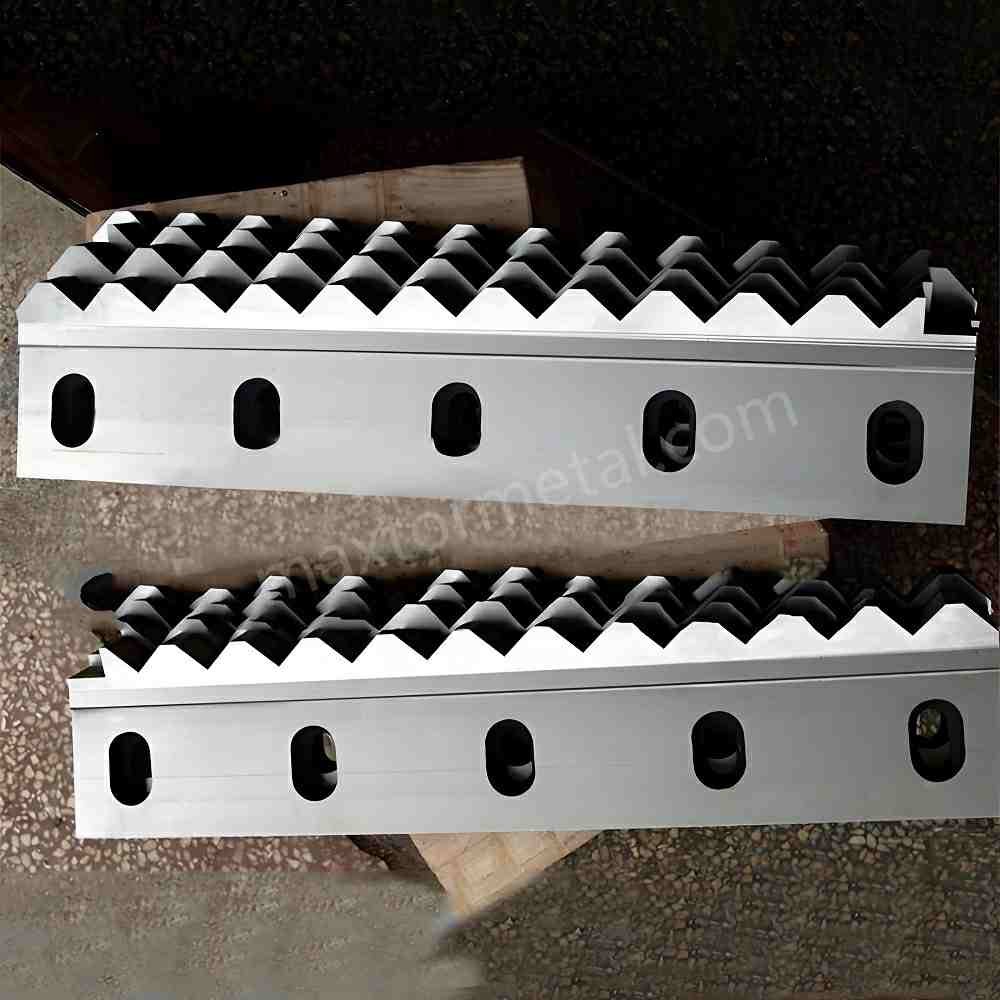
OEM 협업
OEM과 협력하여 단일 샤프트 분쇄기 블레이드 디자인 강력한 팀워크가 필요하다는 뜻이에요. 신뢰는 아이디어를 공유하는 데 도움이 됩니다. 문제를 빠르게 해결하세요. 열린 자세는 서로가 무엇을 원하는지 쉽게 파악할 수 있게 해줍니다. 좋은 파트너십은 더 나은 블레이드를 확보하고 공급망을 개선하는 데 도움이 됩니다.
- 귀하와 공급업체 간의 신뢰는 더 나은 결과를 가져옵니다.
- 열린 마음으로 대화하면 실수와 지연을 막는 데 도움이 됩니다.
- 좋은 팀워크는 분쇄 작업을 더욱 원활하게 만듭니다.
OEM과 협력하면 문제가 발생할 수 있습니다. 블레이드 세부 사항은 장소에 따라 달라질 수 있습니다.이로 인해 다른 나라에서 칼날을 구입하기가 더 어려워집니다. 다른 규정으로 인해 칼날 교체가 어려울 수 있습니다. 이러한 문제로 인해 작업 속도가 느려지고 작업에 위험이 발생할 수 있습니다.
팁: 필요한 것을 잘 알고 명확하게 설명해 주는 공급업체를 선택하세요. 신뢰할 수 있는 회사는 도움을 주고 적합한 업체를 찾을 수 있도록 도와줍니다. 단일 샤프트 분쇄기 블레이드 디자인 당신의 직업을 위해서요.
스케줄링
파쇄기를 잘 작동시키려면 철저한 계획이 필요합니다. 정기적인 점검과 관리는 갑작스러운 고장을 예방하는 데 도움이 됩니다. 파쇄기 사용 빈도와 파쇄 대상에 따라 칼날을 교체하고 날을 갈아야 할 시기를 계획하세요.
| 일 | 빈도 | 목적 |
|---|---|---|
| 블레이드 검사 | 주간 | 일찍 손상을 찾으세요 |
| 청소 | 사용 후 | 칼날이 둔해지는 것을 방지하세요 |
| 날카롭게하다 | 월간 간행물 | 칼날이 잘 작동하도록 하세요 |
| 대사 | 필요에 따라 | 작업을 중단하지 마십시오 |
명확한 계획은 블레이드 마모를 모니터링하고 교체 시기를 파악하는 데 도움이 됩니다. 문제가 발생하기 전에 방지하여 시간과 비용을 절약할 수 있습니다. 또한 단일 샤프트 분쇄기 블레이드 디자인 최선을 다해 일하고 있습니다.
참고: 관리 작업을 기록하고 계획을 따르세요. 이렇게 하면 파쇄기 칼날을 최대한 활용하는 데 도움이 됩니다.
운영자 교육
안전하고 효율적인 파쇄를 위해서는 작업자 교육이 중요합니다. 팀원들에게 칼날 점검, 청소 및 교체 방법을 교육하세요. 모든 직원이 마모되거나 파손된 칼날을 식별하는 방법을 숙지하고 있는지 확인하세요. 적절한 교육은 사고를 예방하고 파쇄기의 원활한 작동을 유지합니다.
- 작업자에게 분쇄기를 안전하게 사용하는 방법을 알려주세요.
- 칼날의 위치와 날카로움을 확인하는 방법을 가르쳐주세요.
- 안전 규칙이 중요한 이유를 설명하세요.
간단한 가이드와 목록을 사용하여 팀이 각 단계를 기억하는 데 도움을 줄 수 있습니다. 잘 훈련된 직원은 팀에서 더 나은 결과를 얻는 데 도움이 됩니다. 단일 샤프트 분쇄기 블레이드 디자인.
팁: 팀원들이 항상 준비 상태를 유지하고 실수를 줄이도록 자주 훈련시키세요. 안전하고 숙련된 작업자는 재활용 작업이 원활하게 진행되도록 도와줍니다.
주요 팁 요약:
- 칼날은 무엇을, 얼마나 많이 갈 것인지에 맞춰 선택하세요.
- 정기적인 점검, 청소, 날카롭게 하는 것을 계획하세요.
- 작업자들에게 칼날을 안전하게 다루는 방법을 교육하고, 문제를 일찍 발견하도록 하세요.
- 신뢰할 수 있는 공급업체와 협력하여 안정적인 단일 샤프트 분쇄기 블레이드 디자인.
이러한 모범 사례를 따르면 파쇄 작업이 더욱 원활해지고 칼날의 수명이 길어집니다. 또한 작업장의 안전성과 생산성을 높일 수 있습니다.
싱글 샤프트 파쇄기 블레이드 디자인을 이해하면 파쇄기에서 최상의 결과를 얻는 데 도움이 됩니다. 블레이드 모양, 재질, 유형이 성능에 어떤 영향을 미치는지 알아야 합니다. 맞춤형 옵션과 엄격한 품질 검사를 통해 고객의 필요에 맞는 블레이드를 제공합니다.
- 칼날을 자주 점검하세요.
- 귀하의 작업에 맞는 올바른 칼날을 선택하세요.
- 도움이 필요할 때는 전문가에게 조언을 구하세요.
단일 샤프트 분쇄기 블레이드 설계에 대한 전문가의 도움을 받으려면 당사 영업 엔지니어에게 문의하세요.
자주 묻는 질문
싱글 샤프트 파쇄기 블레이드 디자인은 무엇입니까?
싱글 샤프트 파쇄기 블레이드 디자인은 싱글 샤프트 파쇄기에 사용되는 블레이드의 모양, 날 스타일, 구조를 설명합니다. 파쇄하려는 재료의 종류와 원하는 결과에 따라 디자인을 선택하세요.
파쇄기 칼날을 언제 교체해야 하는지 어떻게 알 수 있나요?
날 끝이 무뎌졌거나, 깨졌거나, 갈라졌는지 확인해야 합니다. 파쇄기 작동 속도가 느려지거나 절단면이 고르지 않으면 칼날을 교체해야 합니다. 정기적인 점검은 갑작스러운 고장을 예방하는 데 도움이 됩니다.
어떤 블레이드 디자인이 플라스틱 파쇄에 가장 적합합니까?
평평하고 곧은 날의 칼날은 대부분의 플라스틱에 적합합니다. 질기거나 여러 겹으로 된 플라스틱을 파쇄하는 경우 톱니 모양이나 R자 모양의 칼날을 사용해 보세요. 적합한 단일 샤프트 파쇄기 칼날 디자인은 깔끔한 절단을 제공하고 걸림을 방지하는 데 도움이 됩니다.
금속과 플라스틱에 동일한 블레이드 디자인을 사용할 수 있나요?
두 가지 모두에 같은 날을 사용해서는 안 됩니다. Metal는 더 튼튼하고 내마모성이 뛰어난 날이 필요합니다. 플라스틱은 날카롭고 곧은 날이 가장 적합합니다. 더 나은 결과를 얻으려면 싱글 샤프트 파쇄기 날 디자인을 항상 재질에 맞게 조정하십시오.
파쇄기 칼날은 얼마나 자주 갈아야 합니까?
파쇄기를 자주 사용한다면 매달 칼날을 갈아야 합니다. 가볍게 사용하는 경우, 필요에 따라 확인하고 갈아주세요. 날카로운 칼날은 단일 샤프트 파쇄기 칼날의 수명을 늘리고 성능을 향상하는 데 도움이 됩니다.
OEM 또는 맞춤형 블레이드 디자인의 이점은 무엇입니까?
OEM 또는 맞춤형 단일 샤프트 파쇄기 블레이드 디자인은 귀사의 기계 및 파쇄 요구 사항에 정확히 부합합니다. 더 나은 성능, 더 짧은 가동 중단 시간, 그리고 더 긴 블레이드 수명을 누리실 수 있습니다. 맞춤형 블레이드는 특수 파쇄 문제를 해결합니다.
파쇄기 칼날에 적합한 소재를 어떻게 선택합니까?
무엇을 가장 많이 파쇄하는지 생각해 보세요. 부드러운 재질에는 고탄소강이 적합합니다. 금속이나 딱딱한 폐기물에는 합금이나 카바이드 팁이 달린 칼날을 선택하세요. 적합한 재질을 사용하면 싱글 샤프트 파쇄기 칼날의 수명이 더 길어집니다.
파쇄기 칼날을 교체할 때의 안전 수칙이 있나요?
네! 항상 파쇄기를 먼저 끄고 플러그를 뽑으세요. 장갑과 보안경을 착용하세요. 모든 볼트가 단단히 조여져 있고 칼날이 정렬되어 있는지 확인하세요. 칼날을 조심스럽게 교체하면 안전을 보장하고 단일 샤프트 파쇄기의 칼날이 최상의 성능을 발휘하는 데 도움이 됩니다.
또한 참조
산업용 분쇄기 블레이드 및 그 응용 분야에 대한 가이드
단일 샤프트 분쇄기 블레이드의 비밀 풀기: 유지 관리, 선택 및 문제 해결 가이드
분쇄기 블레이드: 분류, 재료 선택, 서비스 수명 및 설계 기술 분석



2 응답